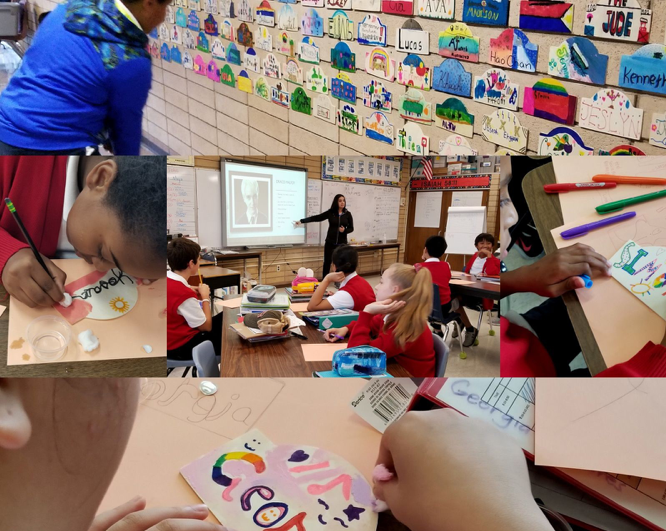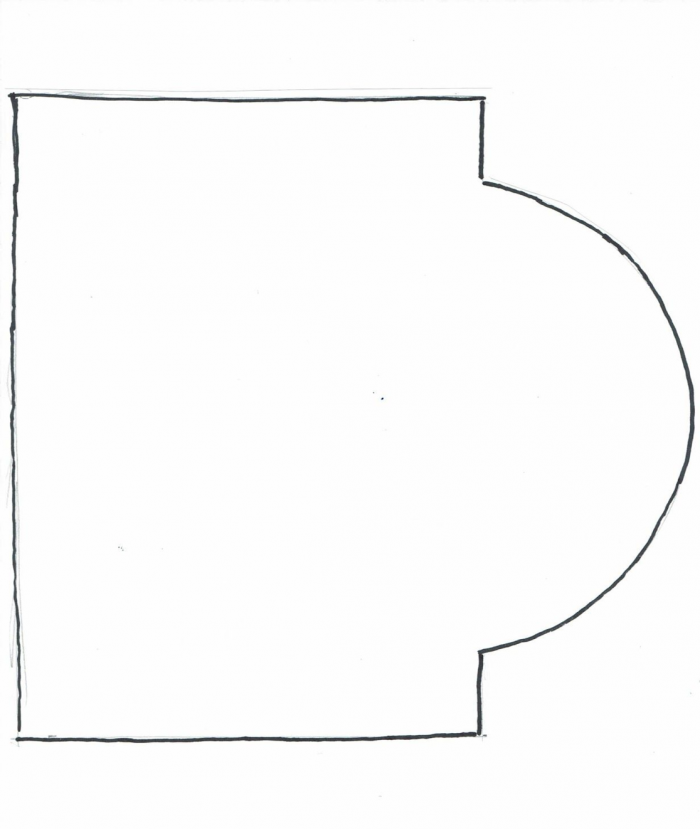Background
Students come from a wide range of ethnic, racial and religious backgrounds. In some cases, students’ names may sound unfamiliar to their teachers or peers. If school community members fear mispronouncing a student’s name, they may inadvertently exclude or marginalize that student in social or academic spheres. In this project, students learn about each others’ names, explore name meanings and related family stories, and brainstorm strategies for respectfully approaching unfamiliar names. Finally, students create artistic plaques to display their names within their cultural or personal contexts.
Level: School
Grade Level: K–5
Location: Burien, Washington
Goals
- Create a safe space for dialogue about names
- Allow students to share their names’ meanings
- Provide strategies for respectfully approaching an unfamiliar name
Measures
- Student and staff project evaluation surveys
- Qualitative tracking of compassionate interactions among students
Grantee Reflection
“The all-school project was an eye-opening experience for many students. It alerted them to unwarranted bias and assumptions around names and created a safe place to discuss name calling, stereotyping and personal identity.”
Procedure
Interested? Here's how you can do this project in your classroom.
What You’ll Need
- Dome-shaped template (included)
- Cardstock paper or woodblocks
- Markers, colored pencils, water-based paint and/or colored wood markers
Steps
1. Identify Learning Goals
Educators can choose the themes that will guide a class discussion about names. The following recommendations may help:
K–2:
“I celebrate my name because it was given to me by people who love me, and my name identifies me.”
“My name identifies my belonging in the world (my last name is a family name shared by other people in my family), and my name is how I introduce myself to others.”
3–5:
“Every name is given for a reason. Every name has a meaning, and there are no accidental or arbitrary names.”
2. Lead a Class Discussion
Educators can introduce the discussion by sharing a story for reflection and then using the discussion questions to guide the conversation.
K–2:
“My Name Song” by CocoMelon Nursery Rhymes & Kids Songs
3–5:
The Name Jar by Yangsook Choi. Be sure to include the introduction:
“I often find it very hard to pronounce foreign names. It takes me a while as a teacher. I have an accent and a speech impediment. I can relate to some of the kids who try to pronounce Unhei's name. It's not always easy!
“Unhei has just left her Korean homeland and come to America with her parents. Kids on her school bus can't seem to pronounce her name, so when Unhei gets to school she refuses to give her friends her name. Her friends decide to choose a name for her using the name jar, but Unhei loves her name because it was picked by her grandmother.”
These questions can guide the discussion:
- Who named you and why were you given your name?
- What meanings does your name have for you?
- What hopes and dreams does your name hold for the people who gave you your name?
- Is your name easy for other people at school to pronounce? Do other students in your school have the same name?
- Is your name difficult for people at school to pronounce? Are you the only one in your school with this name? How does this make you feel?
- Have you ever heard someone get teased because of their name?
- What could you and your friends say or do if you witness someone being teased because of their name?
- What can you do if a classmate has a name that is difficult for you to pronounce? If you have a name that is challenging for other students to pronounce, what can you do to help them learn your name?
3. Create Your Name Plaque
Students and teachers create name-art plaques, decorating their names with pictures and patterns to express qualities with which they identify.
Print dome-shaped templates (below) on cardstock paper, or purchase woodblocks. Have students cut the templates out. Use markers, colored pencils or water-based paint to create the name plaques.
To help students consider what to add to their plaques, you might ask:
“What is it about you that makes you unique? There are many people named John, for example, but who are you, this unique person who has the name John?”
Display the group of name art pieces together to show the unique characteristics that comprise the spirit of your class.
Related Resources
Video

Dome Template

Learn more about the Teaching Tolerance Educator Grants program and apply for your own grant here!
